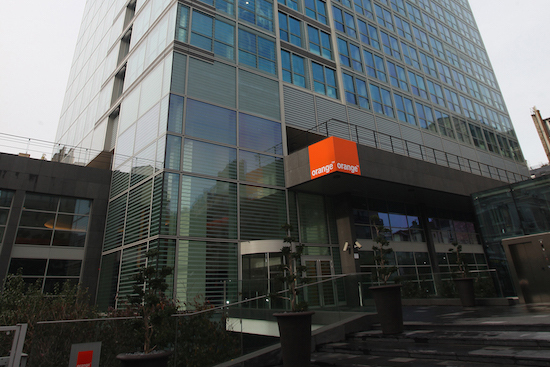The operator will set up towercos in 2020, cut telecom costs by €1bn, focus on infrastructure and B2B services, and could spin off MEA properties.
At the investor event in Paris yesterday, Orange Group’s Chairman and CEO, Stéphane Richard, hailed the previous strategic plan, Essentials 2020, as a success and announced its successor, Engage2025.
He described Engage2025 as “the most significant transformational change the company has undertaken in recent years” and added, “If I had to summarise Engage2025, Orange’s new strategic plan, I would use two words: growth and sustainability. We are going to grow our core business – connectivity – by adding to our competitive edge and by making the most of our network infrastructure.
“We are also going to foster growth beyond connectivity in Europe thanks to three elements which set us apart from our competitors, namely Africa & the Middle East, B2B IT services and financial services.”
Another towerco
As is the fashion among European operators that feel their share prices do not reflect the value of their assets, Orange intends to set up a towerco in its European operating countries next year and could finally consolidate them into a single concern.
Richard stressed that while Orange would not lose control of these assets, it could sell off a portion of the towercos, which collectively cover 40,000 mast sites across the six European countries it operates in.
He said, “Never will we give up any of our infrastructure in a way that will harm us in the future. We will always keep control of these assets, even if we may consider some pragmatic disposals of less strategic towers as we have just done in Spain”.
Orange just sold 1,500 “non-strategic sites” in Spain to Cellnex for €260 million: other operators have sold off tower assets only to face hiked rental rates.
Analysts estimated the Group’s European tower estate could be worth €8-10 billion, while Citi said it could be worth €13 billion, which is equivalent to about 20 times the operating revenue they generate.
The first steps towards creating the towerco will start in its two biggest European markets of France and Spain.
Orange is also looking at establishing separate entities for its fibre businesses in Poland and Spain, as well as for investors to join it in building out coverage in the so-called PIN parts of its fibre network in France. These are areas where it is not commercially viable to provide fibre and public subsidies are involved.
At the moment, Orange has deployed FTTH for 10.4 households and 400,00 in PIN areas: by 2023 this will have increased to 19 million and 4 million respectively.
Ramon Fernandez, Deputy CEO, Finance, Orange, noted in a face-to-face interview, that the operator would consider using 5G fixed wireless access for hard to reach places in Poland and Romania. Orange began its deployment of 5G in Romania in November.
RAN-sharing
Richard said the company will try to cut costs and improve efficiency wherever possible through more RAN-sharing partnerships: such arrangements are already in place or awaiting approval in Belgium with Proximus and with Vodafone in Spain.
He also acknowledged that setting up these arrangements was complex, and varied from country to country, and that, “There is a lot of work to be done”.
Target areas
Orange identified its Orange Business Services and financial services units as key growth areas for the business in the years to 2025. It has just launched Orange Bank in Spain, and will introduce it to Africa too.
In the B2B and consumer sectors, it wants to leverage data and artificial intelligence to improve increase operational efficiency and improve customers’ experience.
The operator committed to spend more than €1.5 billion retraining staff in new technology areas, including 20,000 employees who will be schooled in virtualisation, AI, cloud computing, code and cybersecurity.
Ramon Fernandez, Deputy CEO, Finance, Orange, noted in a face-to-face interview, “In 2014, IT was 25% of our Orange Business Services’ business, now it’s close to 40% and will be 55% in 2023.
Up for opportunities in MEA
Orange’s Middle East and Africa (MEA) operations were identified as an engine for growth, but Richard said it also might consider it for an initial public offering (IPO), among other opportunities.
It is looking to stimulate growth in MEA through content, health, energy and new financial services, including the launch of Orange Bank Africa.
Richard said the company might enter the Ethiopian market: the government is to sell a minority stake in incumbent Ethio Telecom and offer two new operating licences.
Orange will concentrate on 4G in Africa for the foreseeable future, not 5G, and it will have 4G in all its operating coutnries by 2020. It is building out FTTH in Ivory Coast, Morocco and Senegal.
Costs and the environment
The company will strive to cut telecom-related costs by €1 billion by 2023, but at the same time the plan was designed to “beat industry targets on carbon emissions by ten years” and increase digital inclusion.
“Strong economic performance is impossible without environmental leadership,” Richard stated, referring to the climate emergency, rather than climate change.
Orange expects its profit to be flat or increase only slightly in 2020, forecasting an average annual rise in earnings before interest, tax, depreciation and amortisation after leases of 2-3% until 2023.
The company will focus on organic cash flow – the monies left to cover costs including dividends, acquisitions, spectrum and litigation – to €3.5bn-€4 billion by 2023.
It will maintain a dividend of 70¢ across the five-year period of the plan, which could increase in the right circumstances.




